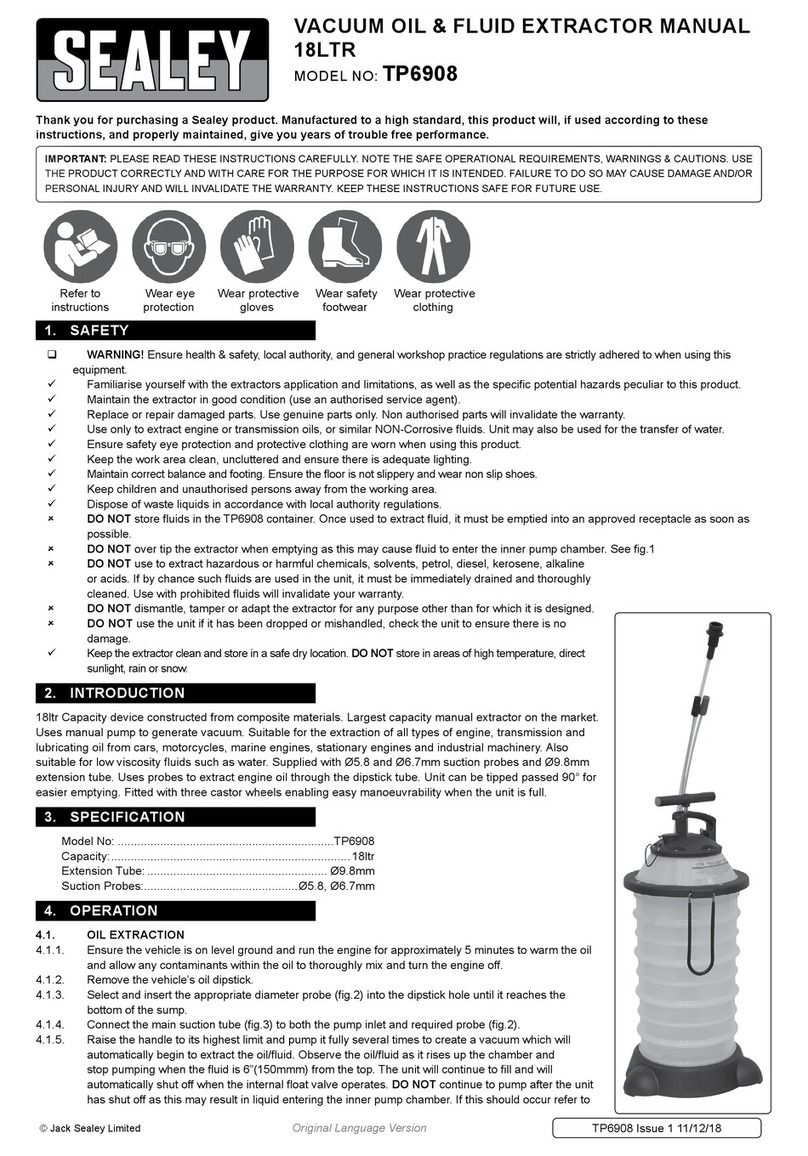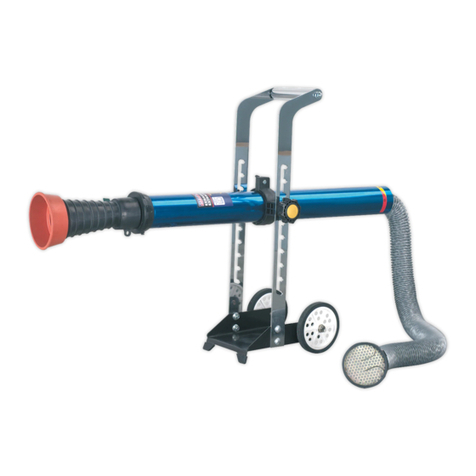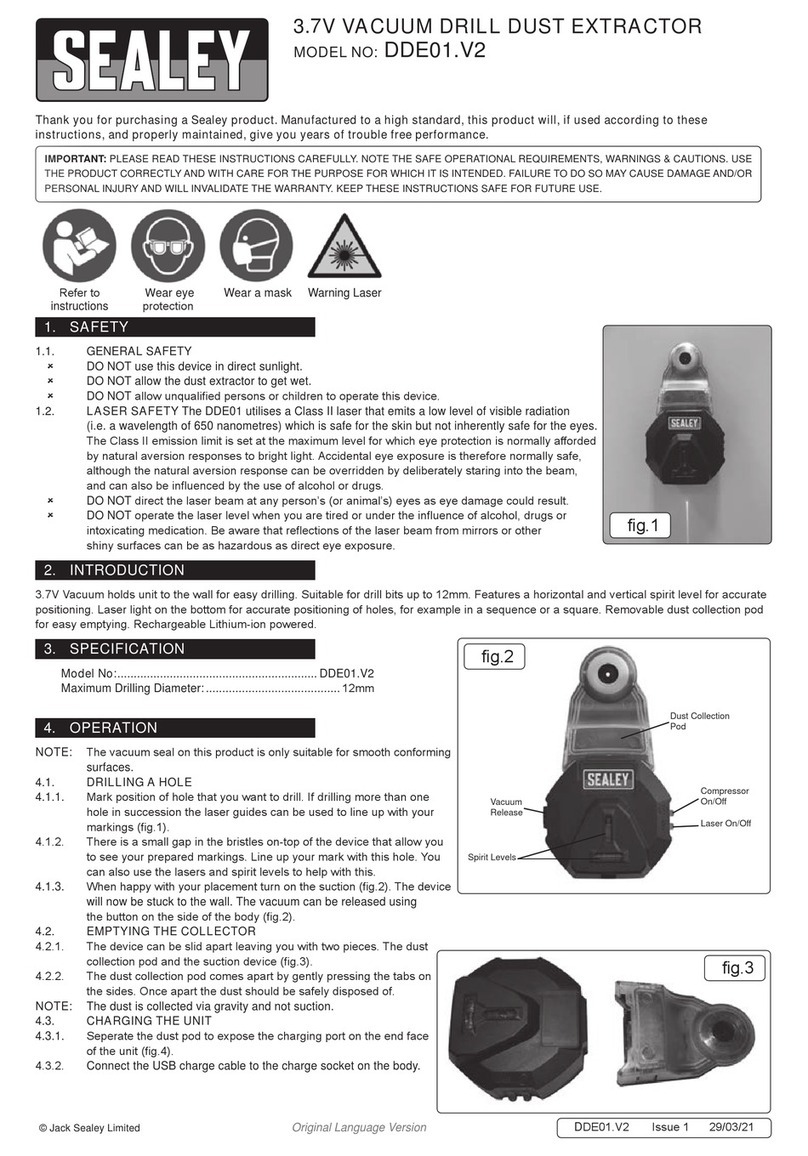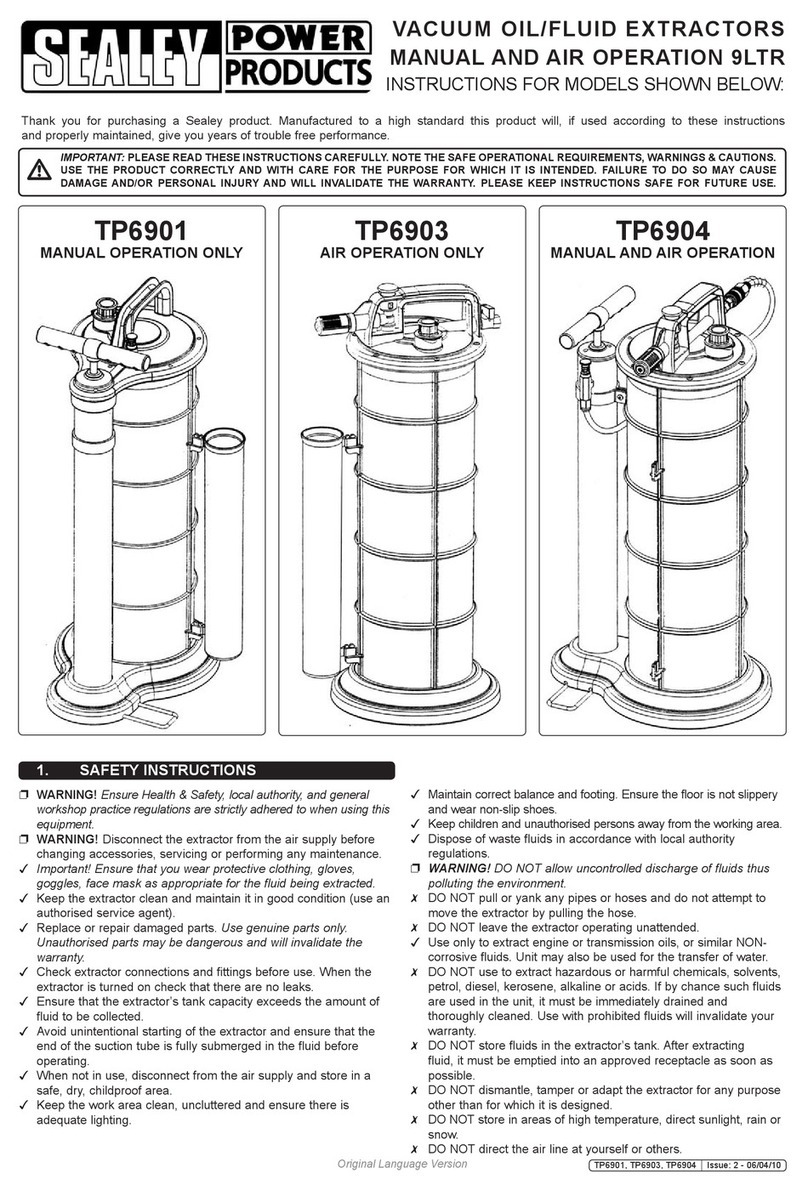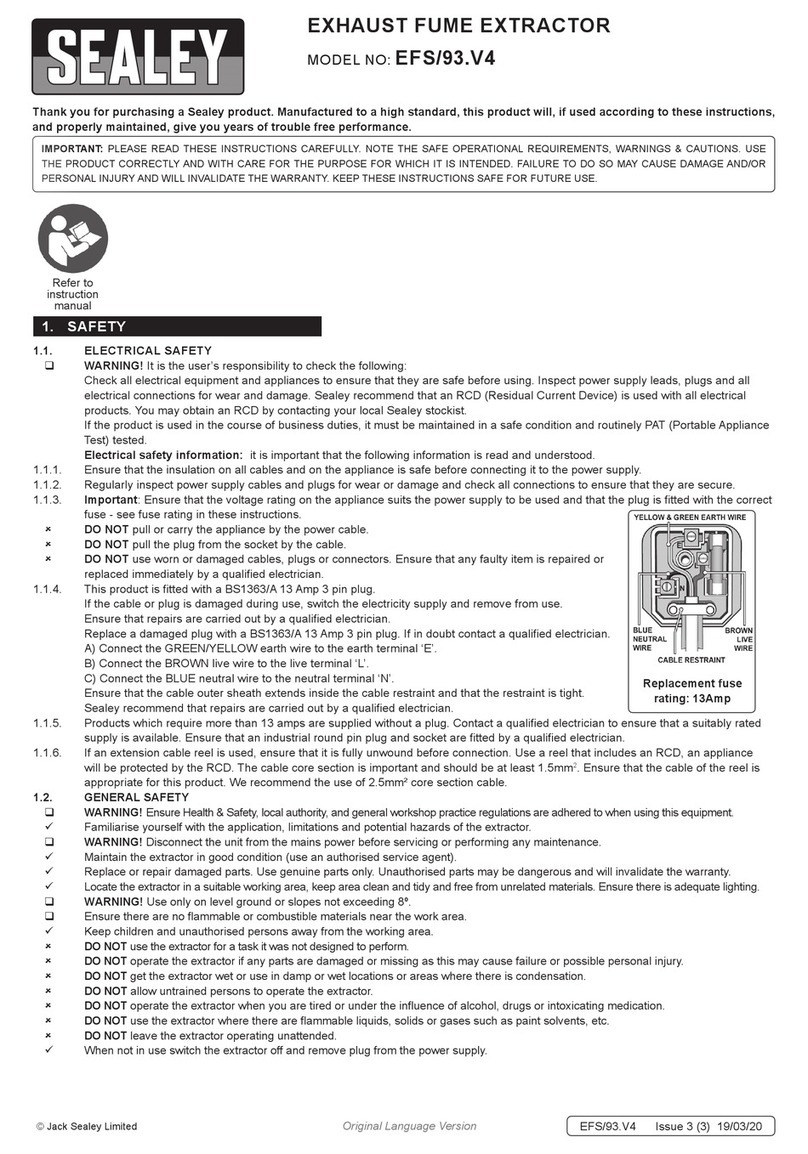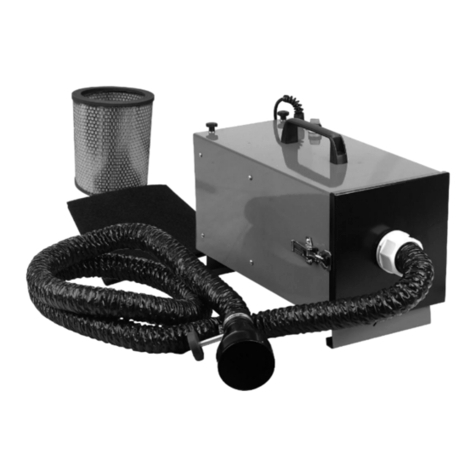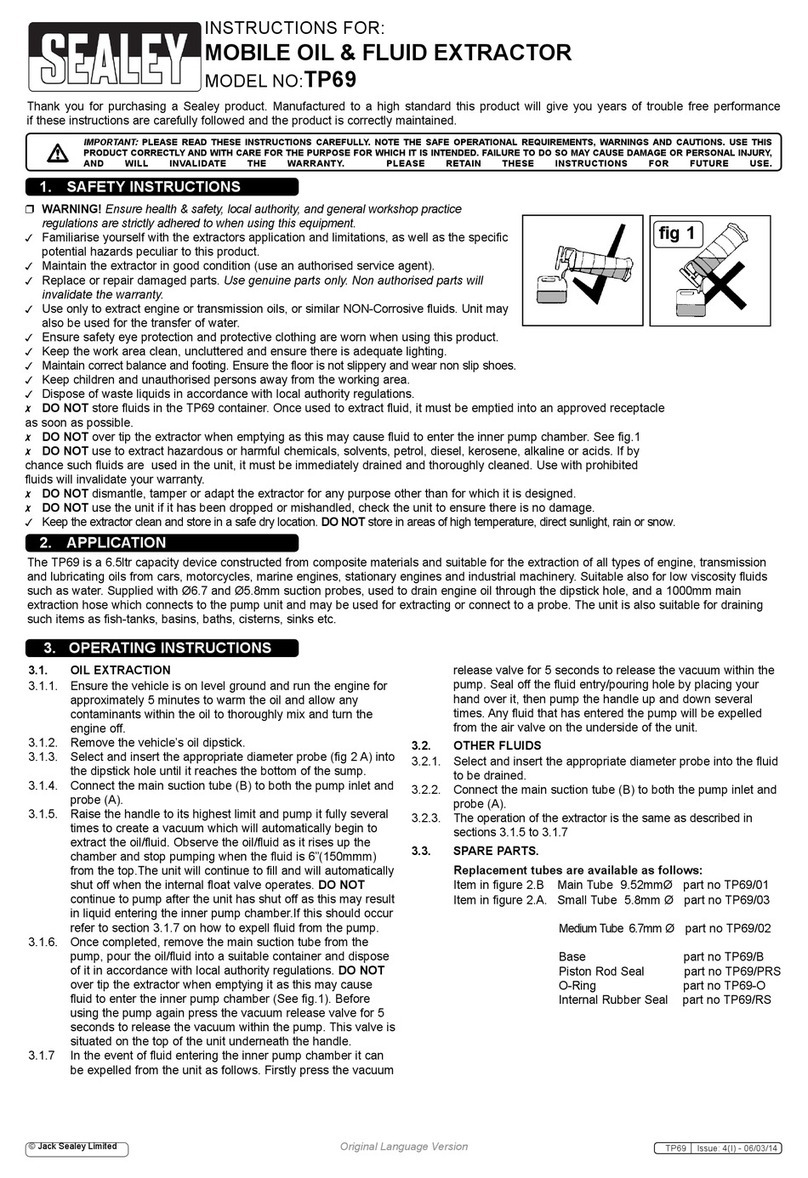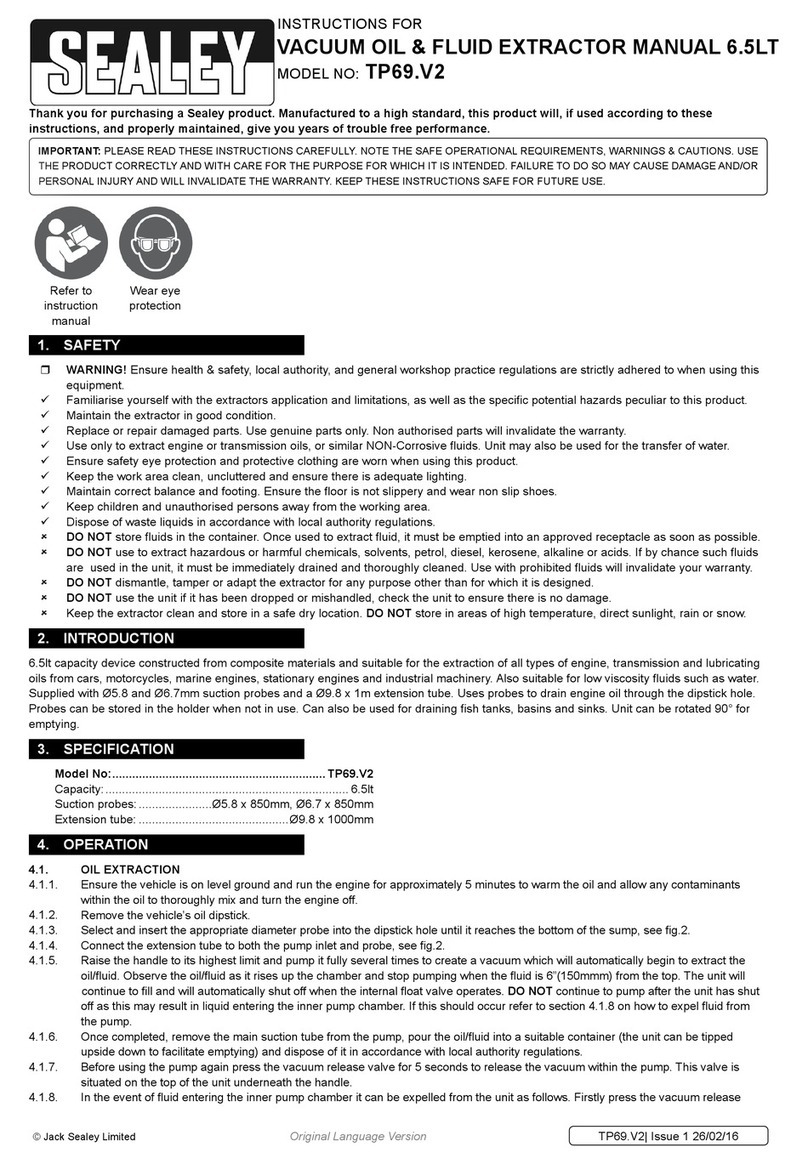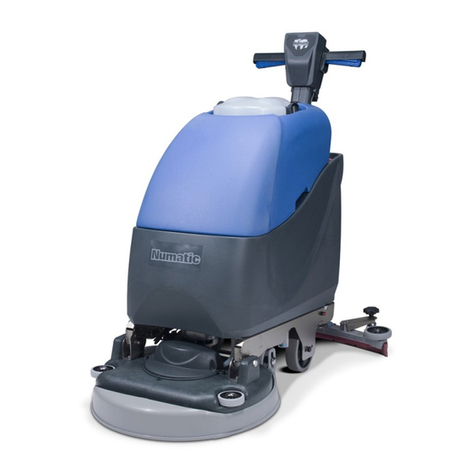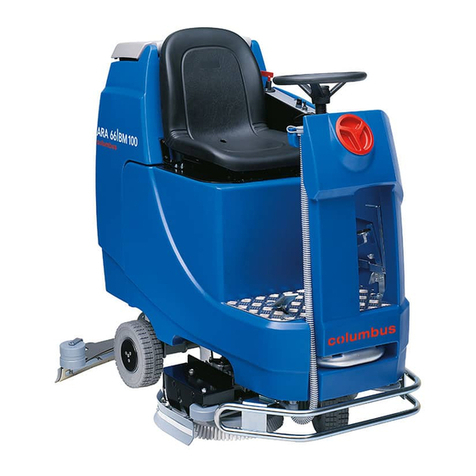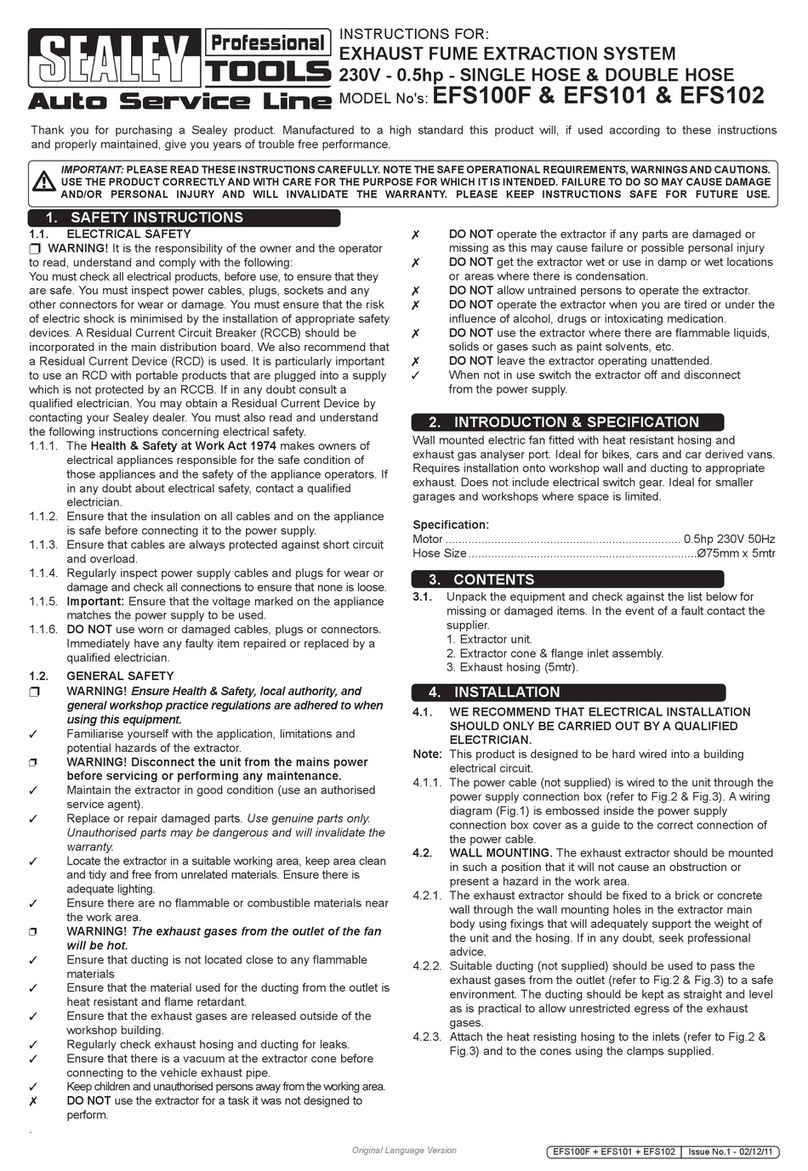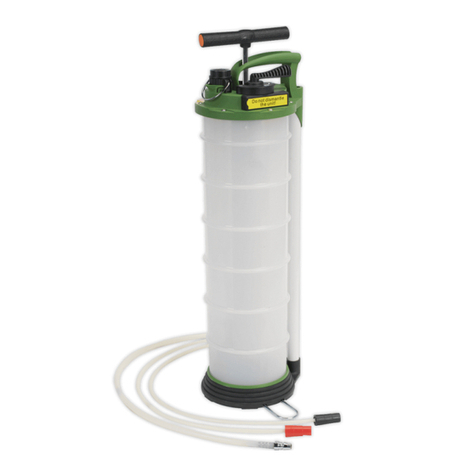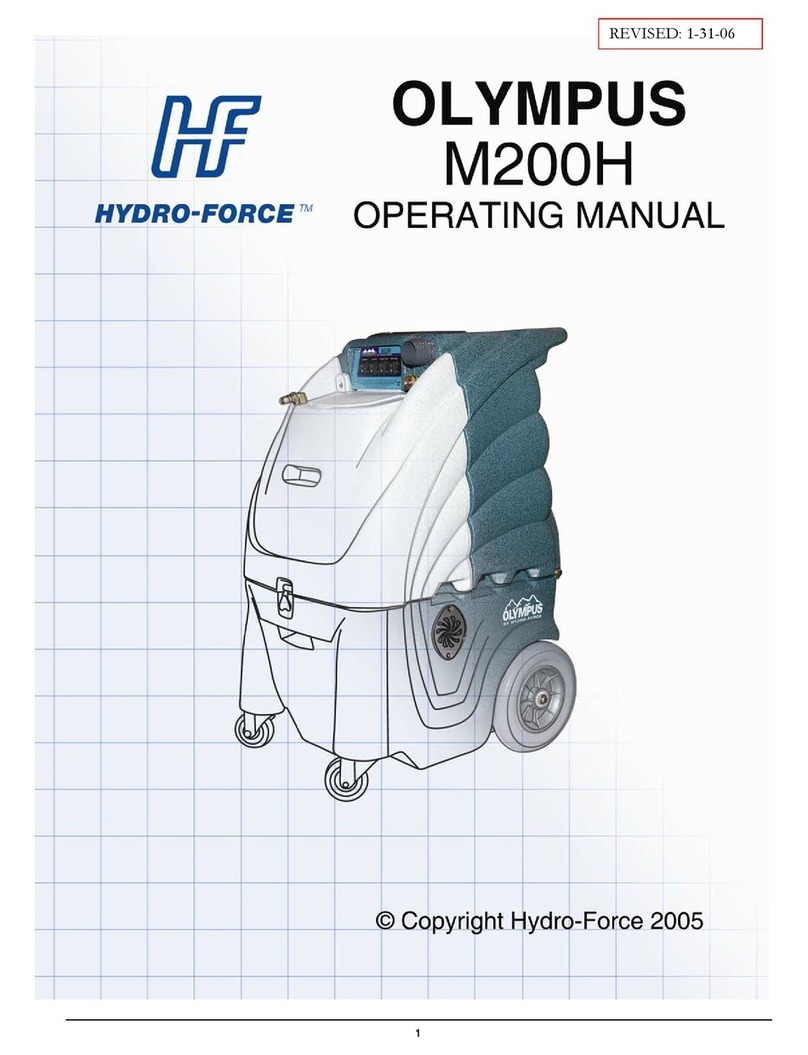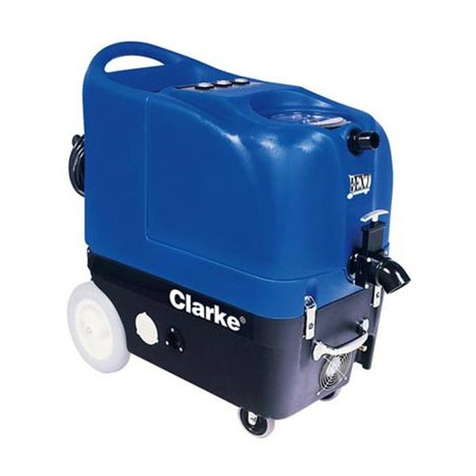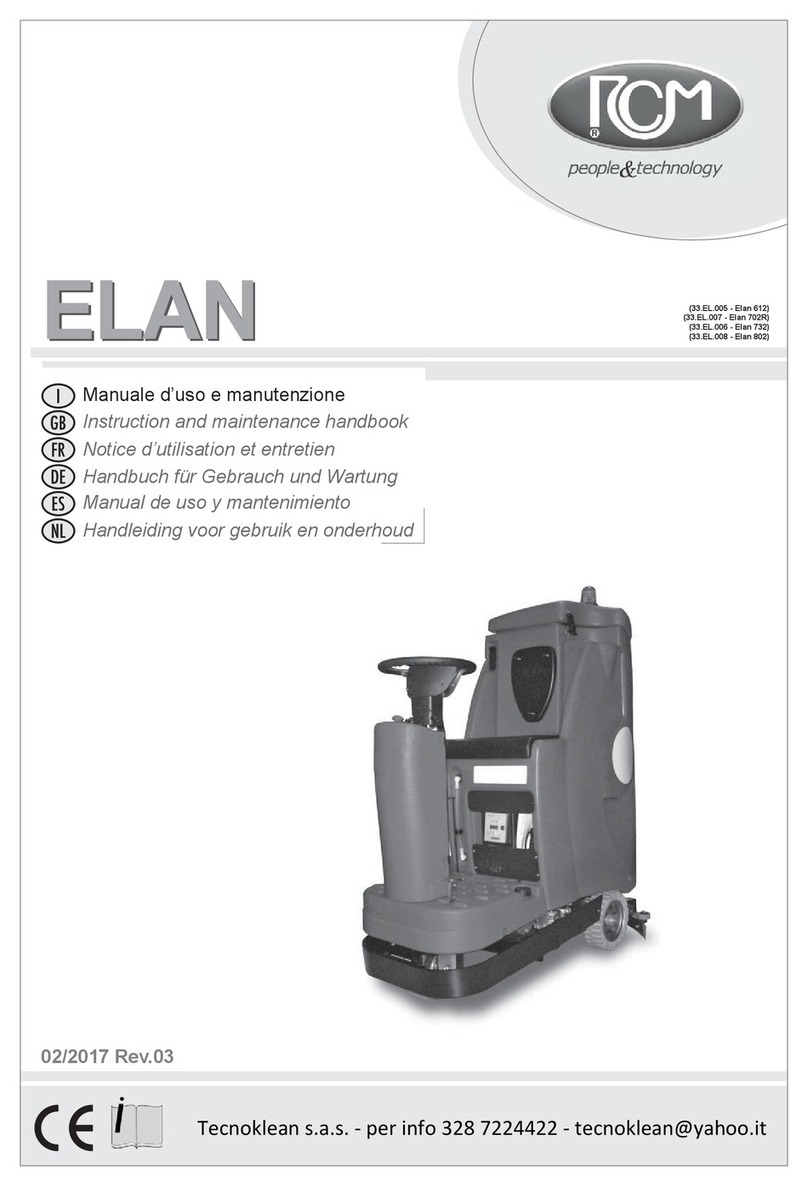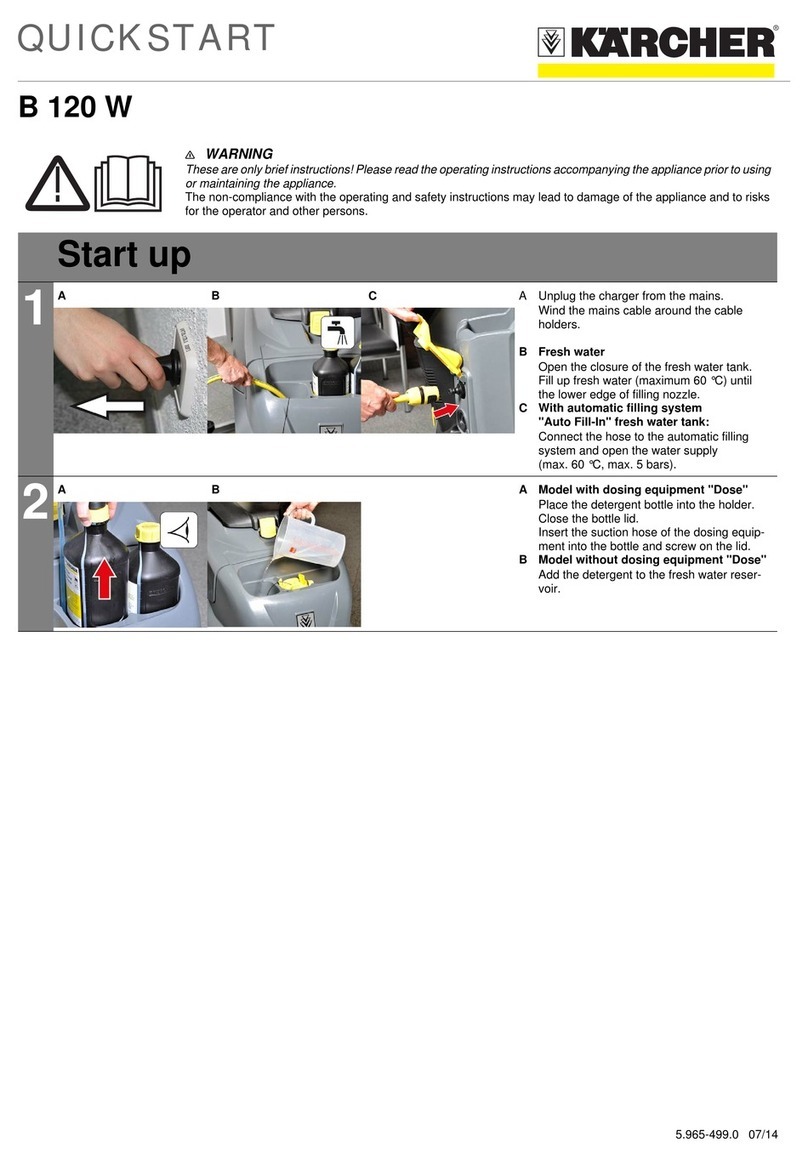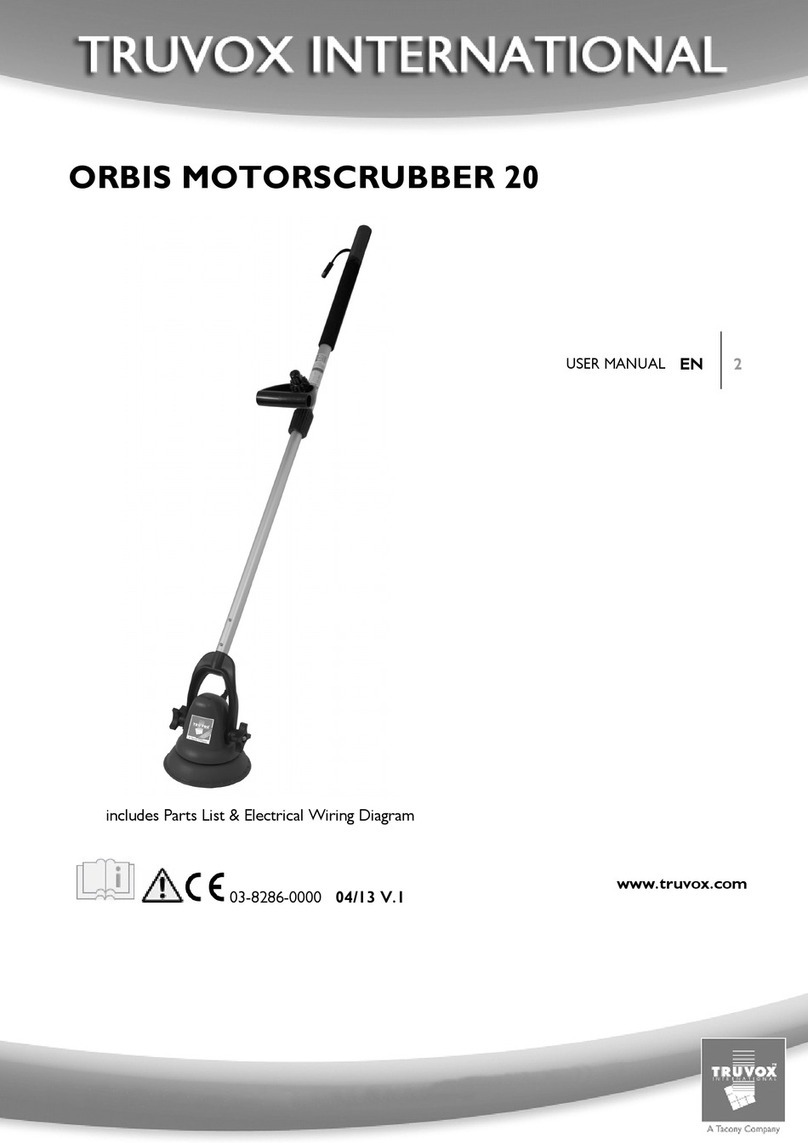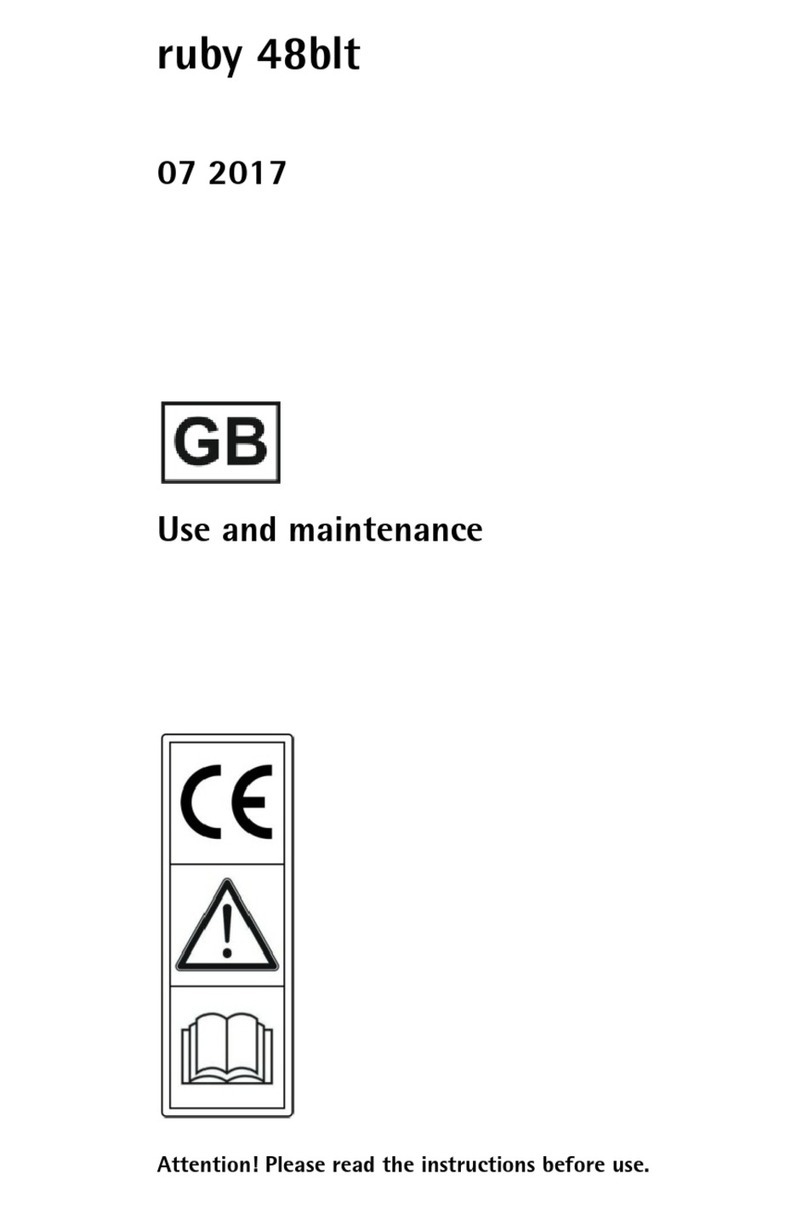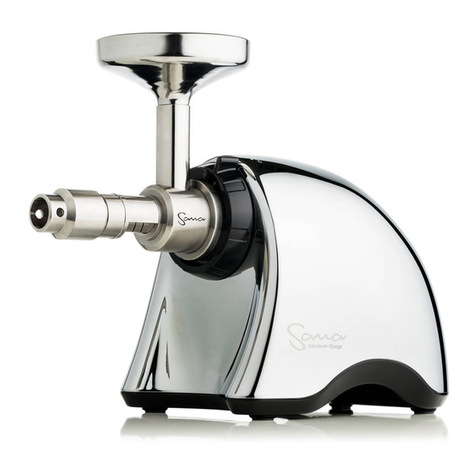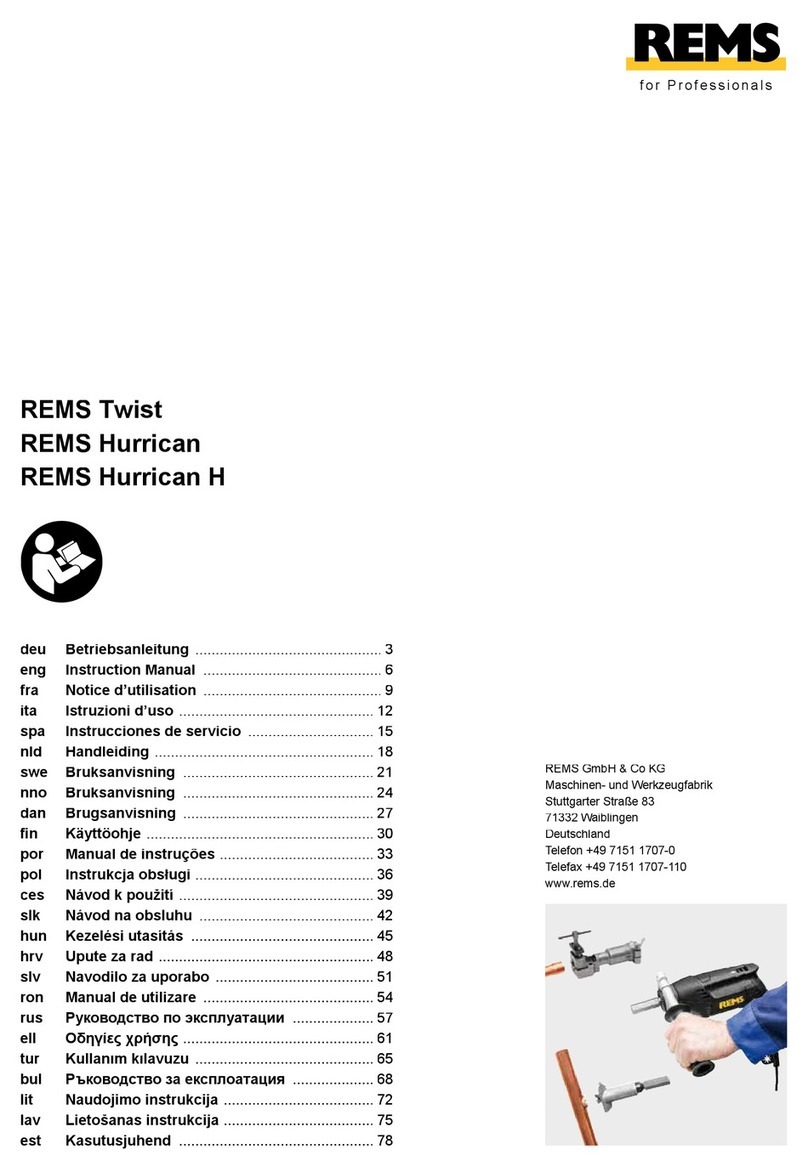
INSTRUCTIONS FOR:
EXHAUST FUME EXTRACTOR
Model: EFS/93.V2
The use of symbols in this document is to attract your attention to possible danger. The symbols and warnings themselves do not eliminate any danger, nor are they substitutes for proper
accident prevention measures.
Thank you for purchasing a Sealey product. Manufactured to a high standard this product will, if used according to these instructions
and properly maintained, give you years of trouble free performance.
EFS/93.V2 - (1) - 140103
1. SAFETY INSTRUCTIONS
IMPORTANT: PLEASE READ THESE INSTRUCTIONS CAREFULLY. NOTE THE SAFE OPERATIONAL REQUIREMENTS, WARNINGS AND
CAUTIONS. USE THE PRODUCT CORRECTLY AND WITH CARE FOR THE PURPOSE FOR WHICH IT IS INTENDED. FAILURE TO DO SO MAY
CAUSE DAMAGE OR PERSONAL INJURY AND WILL INVALIDATE THE WARRANTY. PLEASE KEEP INSTRUCTIONS SAFE FOR FUTURE USE.
1.1. ELECTRICAL SAFETY. p
p
WARNING! It is the users responsibility to read, understand and comply with the following:
You must check all electrical equipment and appliances to ensure they are safe before using. You must inspect power supply leads, plugs and
all electrical connections for wear and damage. You must ensure the risk of electric shock is minimised by the installation of appropriate safety
devices. An RCCB (Residual Current Circuit Breaker) should be incorporated in the main distribution board. We also recommend that an RCD
(Residual Current Device) is used with all electrical products. It is particularly important to use an RCD with portable products that are plugged
into an electrical supply not protected by an RCCB. If in doubt consult a professional electrician. You may obtain a Residual Current Device by
contacting your Sealey dealer. You must also read and understand the following instructions concerning electrical safety.
1.1.1. The Electricity At Work Act 1989 requires all portable electrical appliances, if used on business premises, to be tested by
a qualified electrician, using a Portable Appliance Tester (PAT), at least once a year.
1.1.2. The Health & Safety at Work Act 1974 makes owners of electrical appliances responsible for the safe condition of the appliance,
and the safety of the appliance operator. If in any doubt about electrical safety, contact a qualified electrician.
1.1.3. Ensure the insulation on all cables and the product itself is safe before connecting to the mains power
supply. See 1.1.1. & 1.1.2. above and use a Portable Appliance Tester (PAT).
1.1.4. Ensure that cables are always protected against short circuit and overload.
1.1.5. Regularly inspect power supply, leads, plugs for wear and damage and check power connections
to ensure that none is loose.
1.1.6. Important: Ensure the voltage marked on the product is the same as the electrical power supply
to be used and check that plugs are fitted with the correct capacity fuse. A 13 amp plug may require
a fuse smaller than 13 amps for certain products (subject to 1.1.10. below). See fuse rating at right.
1.1.7. DO NOT pull or carry the appliance by its power supply lead. Products such as welders
must not be pulled or carried by their output cables.
1.1.8. DO NOT pull plugs from sockets by the cable.
1.1.9. DO NOT use worn or damaged leads, plugs or connections. Immediately replace or have repaired by
a qualified electrician. A U.K. 3 pin plug with ASTA/BS approval is fitted. In case of damage, cut off
and fit a new plug according to the following instructions (discard old plug safely).
(UK only - see diagram at right). Ensure the unit is correctly earthed via a three-pin plug.
a) Connect the GREEN/YELLOW earth wire to the earth terminal E.
b) Connect the BROWN live wire to live terminal L.
c) Connect the BLUE neutral wire to the neutral terminal N.
After wiring, check there are no bare wires, that all wires have been correctly connected, that the cable outer insulation extends
beyond the restraint and that the cable restraint is tight.
Double insulated products are often fitted with live (BROWN) and neutral (BLUE) wires only. Double insulated products are always marked with
this symbol . To re-wire, connect the brown & blue wires as indicated above. DO NOT connect the brown or blue to the earth terminal.
1.1.10. Some products require more than a 13 amp electrical supply. In such a case, NO plug will be fitted. You must contact a qualified electrician
to ensure a 30 amp fused supply is available. We recommend you discuss the installation of a industrial round pin plug and socket with your electrician.
1.1.11. Cable extension reels. When a cable extension reel is used it should be fully unwound before connection. A cable reel with an RCD
fitted is recommended since any product which is plugged into the cable reel will be protected. The section of the cable on the
reel is important. We suggest at least 1.5mm2section cores but to be absolutely sure that the capacity of the cable reel is
suitable for this product and for others that may be used in the other output sockets, we recommend the use of 2.5mm2section.
Blue
Neutral
wire
Yellow & Green
Earth wire
Cable
restraint
FUSE RATING
THIS PRODUCT MUST BE FITTED
WITH A
13 Amp FUSE
Brown
Live
wire
1.2 GENERAL SAFETY
pWARNING! Ensure Health & Safety, local authority, and general workshop practice regulations are adhered to when using this equipment.
3Familiarise yourself with the products application and limitations, as well as the specific potential hazards peculiar to the extractor.
pWARNING! Disconnect the unit from the mains power before servicing or performing any maintenance.
3Maintain the extractor in good condition (use an authorised service agent).
3Replace or repair damaged parts. Use genuine parts only. Non-authorised parts may be dangerous and will invalidate the warranty.
3Locate the extractor in a suitable working area, keep area clean and tidy and free from unrelated materials. Ensure there is adequate lighting.
pWARNING! Use only on level ground or slopes not exceeding 8%.
3Ensure there are no flammable or combustible materials near the work area.
3Keep children and unauthorised persons away from the working area.
7DO NOT use the extractor for a task it was not designed to perform.
7DO NOT operate the extractor if any parts are damaged or missing as this may cause failure or possible personal injury.
7DO NOT get the extractor wet or use in damp or wet locations or areas where there is condensation.
7DO NOT allow untrained persons to operate the extractor.
7DO NOT operate the extractor when you are tired, under the influence of alcohol, drugs or intoxicating medication.
7DO NOT use the extractor where there are flammable liquids, solids or gases such as paint solvents, etc.
7DO NOT leave the extractor operating unattended.
3When not in use switch the extractor off and remove plug from the power supply.
